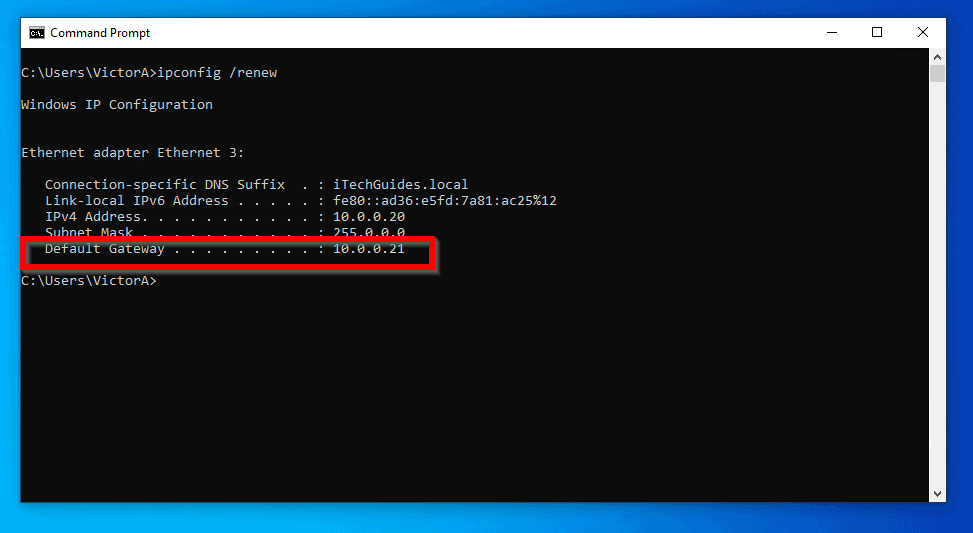
- Connecting to a wired server in windows 7 how to#
- Connecting to a wired server in windows 7 install#
- Connecting to a wired server in windows 7 full#
If you’re having problems with your network connection, check out Fix network connection issues in Windows on the Microsoft Support website.įor more details about the Surface USB-C to Ethernet and USB 3.0 Adapter, visit the Microsoft Store online. You should see the name of the Ethernet network with one of the following words listed underneath the network name: To check your Ethernet connection, on your Surface, hover your mouse pointer over the Network icon on the lower right side of the taskbar.

Take an Ethernet cable that’s plugged into a router, switch, hub, or modem, and then plug the other end into the Ethernet jack on the adapter.
Connecting to a wired server in windows 7 install#
The driver will install automatically and take a few moments. Plug the USB-C connector on the adapter into the USB-C port on your Surface device. To connect the adapter and use an Ethernet connection To do this, go to Find out which Surface model you have, and then select the Surface device on the left-hand side. This adapter works with any Surface that has a USB-C port. To determine if a Surface has a USB-C port, check the features page for the device. Use the Windows "Add Printer" utility.The Surface USB-C to Ethernet and USB 3.0 Adapter lets you connect to a network using a wired Ethernet connection. If the dynamic host control protocol server of the network is not. This will map a drive to the user's home directory on the Linux machine.10Add the printer to the Windows machine. To detect a network, Windows needs your adapter to have a valid IP address for that network. On the Windows machine, click on "Start" and right-click "My Computer." Select "Map Network Drive," choose a drive letter and type \netbios nameuser.
Connecting to a wired server in windows 7 full#
Make sure you change the parameters to reflect your network.workgroup = WORKGROUPnetbios name = MYNAMEsecurity = usernull passwords = trueusername map = /etc/samba/smbusershostname lookups = yeshosts equiv = /etc/hostshosts allow = 192.168.0.0/255.255.255.0 localhosthosts deny = Allinterfaces = lo eth0bind interfaces only = yesguest ok = yesprinting = CUPSprintcap name = CUPScomment = All Printersbrowseable = noprintable = yeswritable = nopublic = yesguest ok = yespath = /var/spool/sambaprinter admin = rootcomment = PRINTERNAMEprintable = yespath = /var/spool/sambapublic = yesguest ok = yesprinter admin = rootpath = /HOME/PUBLICbrowseable = yesread only = noguest ok = yespublic = yescreate mode = 766path = /home/%Uread only = novalid users = %U root6Test the smb.conf file with the following command:sudo testparm7Add additional users to the Samba server:useradd -c "New User" -m -g users -p Passwd1 newuserThe useradd options are as follows:-c is the comments section which is used for the user's Full Name-m says to create the user's home directory-g is the group name for the user's initial login group-p is the user's password8Let Samba know about the users:sudo smbpasswd -a newuser9Map the Windows network drives.

Issue the following command:sudo gedit /etc/samba/smb.confThen, either make a new configuration file by following the Samba documentation or copy and paste the following example into the editor. Use the web-based graphical interface by typing " in your browser.3Stop the Samba services:sudo /etc/init.d/samba stop4Move the default configuration file to a backup:sudo mv /etc/samba/smb.conf /etc/samba/5Create a new smb.conf file. Use your graphical package manager or command line tools.2Configure CUPS to use your printer. However, you will need a large hard drive to hold everyone's files.Instructions1Install Samba and CUPS on the Linux computer. Since Linux can run on minimal hardware and a file and print server does not need a lot of memory or CPU resources, you can use an old desktop that you would normally send to the trash.
Connecting to a wired server in windows 7 how to#
How to Set Up a Home Network Between Linux & WindowsYou can set up a home network complete with a shared file server and print server by installing the Common Unix Print Services (CUPS) and Samba on a Linux desktop. On the windows machine, Go to Control Panel, Network and Internet, Internet Sharing Center, Change adapter settings.


 0 kommentar(er)
0 kommentar(er)
